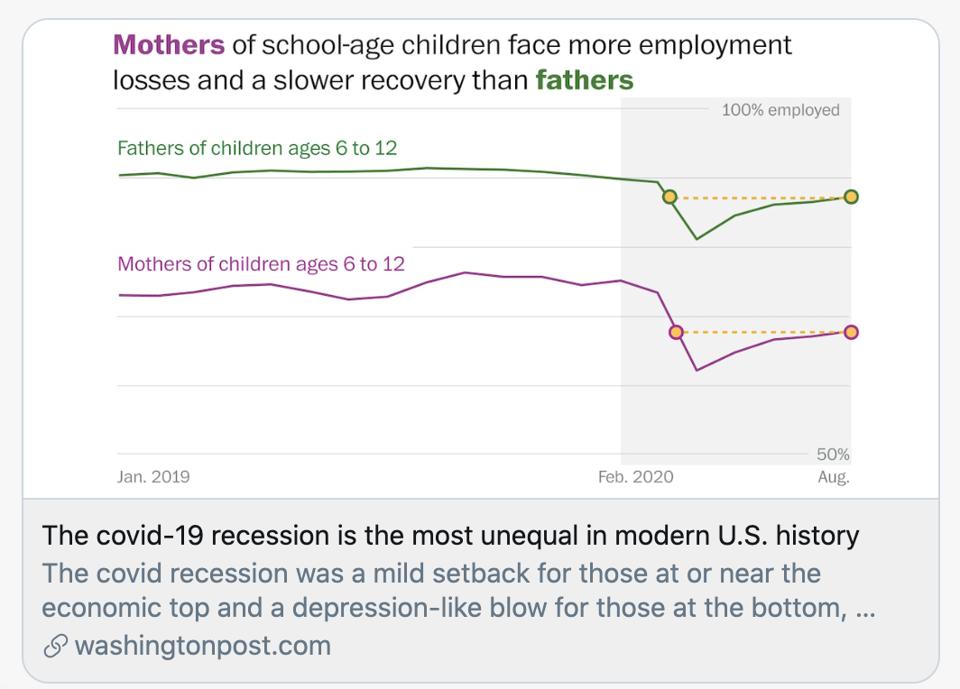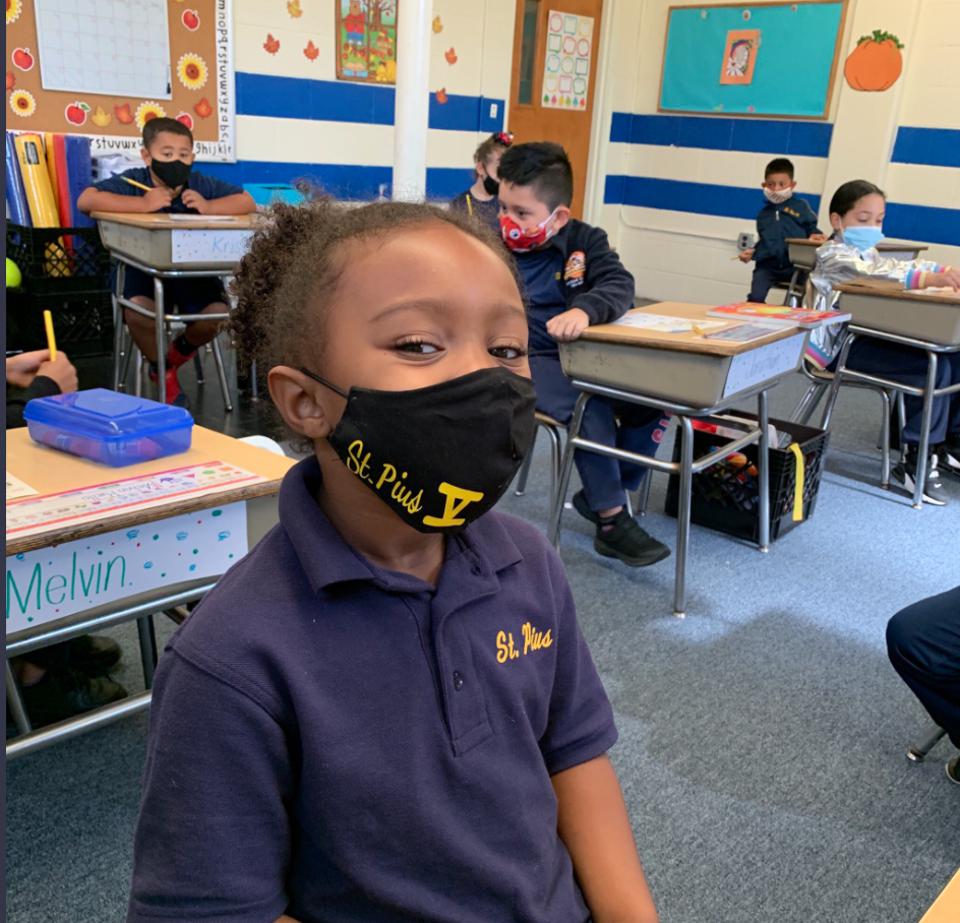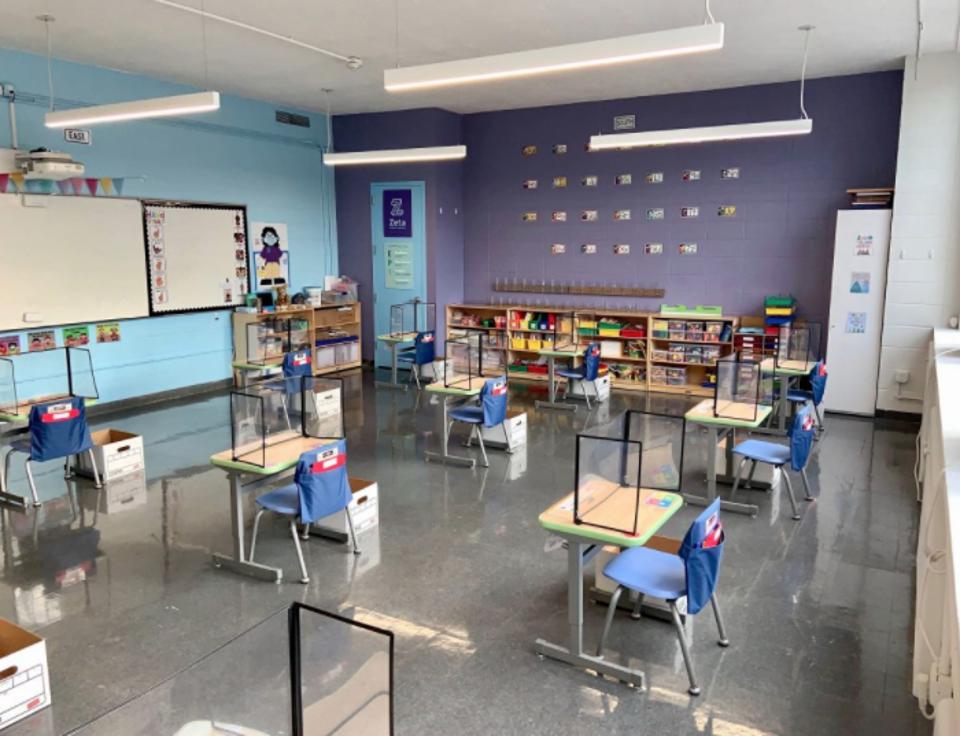
As Schools Finally Find Footing, NYC Reverses Course On Reopening
Rather than innovate, de Blasio plans to just extricate himself from Covid’s challenges
Forbes | October 5, 2020
By Jeanne Allen, Founder and CEO of CER
The increasing lunacy of the political world just got even more crazy, with the news that New York City Mayor Bill de Blasio would be cancelling all schools and daycare this week for all students in 9 zip codes throughout some of the neediest communities in Brooklyn and Queens. Concerned with infection rates of over 3% in those large boroughts, de Blasio is once again making a mistake that could be fatal in other ways for more people, by condemning entire blocks of a city without regard for what’s actually going on in that particular block or community.
No wonder the union representing school principals which usually supports the Mayor issued a “no confidence” vote in his leadership late last month, asking the state to take over education for the city for agreeing to let “educators work remotely if they live with family vulnerable to the coronavirus,” despite precautions they’ve taken. While the principals are back and have prepped schools for safety, the Mayor’s agreement undermines parent confidence in schools and the ability of these institutions to do their job.
Indeed the principal’s union showed uncharacteristic independence from the Mayor’s administration by taking this bold step. And they were right to do so. This weekend’s announcement to send all students home again is bone chilling for the people whose livelihoods may have just gotten back to some semblance of normalcy when schools reopened.
“The covid recession was a … depression-like blow for those at the bottom,” reported the Washington Post. “Seven months into the recovery, Black women, Black men and mothers of school-age children are taking the longest time to regain their employment.”

Mothers of school-age children face more employment losses and a slower recovery WASHINGTON POST
Many parents without other supports rely on school and day care to help them return. That’s likely why the number of students enrolling in Catholic schools is rising rapidly throughout the country, and charter school inquiries are up dramatically. As argued and predicted weeks before school began, it’s the schools with the flexibility, accountability directly to parents (if they don’t’ serve, they close) and commitment that are not only open but safe.
As I wrote this August, it is “impractical and wrong to make policies on reopening the same for every community, as if Covid affected every street, school, town, and region in the same way.”
Now widely studied and reported, private, Catholic and Charter systems took the most innovative steps to safeguard and ensure both safety and education would be accomplished so that they would be able to open at typical back-to-school times when officials deemed it safe.
But innovation seems to belie Mayor de Blasio and many other officials across the country. They seem to think that it’s something just for business or tech sectors. The reality is that while it is not a difficult thing to accomplish, the need must be felt.
Social innovation is “a novel solution to a social problem that is more effective, efficient, sustainable than present solutions and for which the value created accrues primarily to society as a whole rather than private individuals.”
In other words, innovation needn’t come with fancy bells and whistles. Sometimes it’s just doing something better, more effectively.
Thomas Carroll, superintendent of Boston Catholic Schools, knew he had to offer in-person schooling to his families and spent several months reviewing and researching supports to help schools make that possible. “If your school is hesitating about opening in the fall,” he wrote on the website, “seriously consider a Catholic school that offers live in-person instruction, a sense of community, and teachers who will love your children like their own — all in a safe, healthy environment with faith and respect.”
It turns out many were willing to do just that. Despite fears over enrollment drops because of the pandemic, enrollment surged by 4,344 to 31,176 students. This is actually happening in every system that offers choice.

St. Pius V School Lynn School Student ST PIUS V SCHOOL LYNN | @STPIUSV1
As reported in the Wall Street Journal, Zeta Public Schools, a charter network in the Bronx, has overhauled “everything from drop-off procedures and toilets to taekwondo class (no more shouting allowed).” Founder Emily Kim has been writing to me since the summer, sharing first hand how Mayor de Blasio’s actions were ignoring the most important considerations schools needed to reopen. She wrote:
“After announcing nearly one month ago that all NYC school staff would have access to 34 expedited COVID-19 testing sites, including charter schools, the Mayor and the Chancellor have refused to provide charter schools with the list despite repeated letters asking for the information for the safety of the NYC communities we serve, as well as the entire NYC community….When we requested outdoor learning space, as invited by the Mayor’s Outdoor Learning initiative, we received an email from the DOE congratulating us for being approved to use our own pre-existing space for outdoor learning.”
Instead of waiting for the city to help them, charters like hers took safety into their own hands. Flash forward a month, the Zeta Charter Schools in-person school model is so well-done that Kim was invited to brief more than 100 charter leaders nationwide about “how she changed recess, lunch, transitions between classes, and other necessities.”

A Zeta Public School Classroom ZETA PUBLIC SCHOOLS
And today, Zeta’s charter schools are educating students because, as its founder wrote recently, “our families across our four schools informed us they were in great need for us to serve their children in person for a variety of reasons: they cannot afford child care, they are essential workers, their children are struggling academically, their children have special needs, their children are English Language Learners, they are in temporary housing (homeless/shelter situations), or they simply need to get back to work.”
By being innovative, Kim and leaders like her around the country are able to mitigate the threat of Covid while providing a stable, productive environment for students, and consequently for the adults around them.
With scores of examples like this, there is no substantive rationale for closing entire cities, other than they are not compelled to innovate. As social innovation expert Geoff Mulgan of the University College London writes, “A contented and stable world might have little need for innovation. Innovation becomes an imperative when problems are getting worse, when systems are not working, or when institutions reflect past rather than present problems.”
And there’s the rub. De Blasio is content to run a system that is not working for most kids, and not only won’t acknowledge it, but will condemn hundreds of schools and communities to a purely virtual, economically-devastating existence despite myriad innovative solutions that have already been demonstrating success nationwide.
Disappointingly, Governor Andrew Cuomo, while pushing back on some city closures, approved de Blasio’s school closures effective immediately, without providing families any option, or resources to provide or find another way to educate their children.
Clearly nationwide and local models for handling Covid’s impact on school never reached the executives in the Empire State. A pity for those who will suffer the most.
Follow Jeanne on Twitter or LinkedIn or some of her other work here.
Founded in 1993, the Center for Education Reform aims to expand educational opportunities that lead to improved economic outcomes for all Americans — particularly our youth — ensuring that conditions are ripe for innovation, freedom and flexibility throughout U.S. education.

